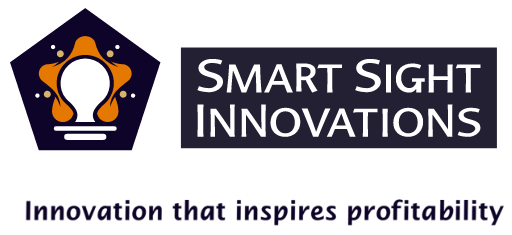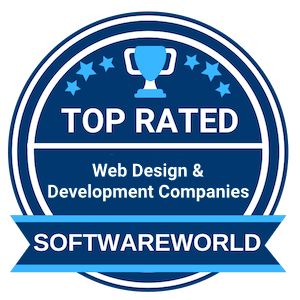 Over time, manufacturing has changed from developing machines to increasing production to using computers for storing information. We now live in an era where machines are connected, intelligent and autonomous and are undergoing a revolution in their method of operation with a constant combination of modern information and communication technology.
Over time, manufacturing has changed from developing machines to increasing production to using computers for storing information. We now live in an era where machines are connected, intelligent and autonomous and are undergoing a revolution in their method of operation with a constant combination of modern information and communication technology.
What is IIoT?
IoT refers to a broad category of passive objects (for instance vehicles, electronic systems, etc.) that can measure parameters, exchange data and communicate it to a network and other devices. Industrial IoT (IIoT) utilizes IoT applications for industrial purposes and involves machine learning and big data technology.
Companies connect, monitor, analyze and act on industrial data by utilizing sensor data, machine-to-machine connectivity and automation technologies. This boosts productivity, maximizes revenue growth and cuts expenses.
The IIoT process collects large quantities of production data, sends it through networks, analyzes it and translates it into useful information on a cloud platform. This allows businesses to arrive at informed decisions that impact major business decisions.
Applications of IIoT
IIoT focuses on technologies and commodities used in commercial settings. Some IIoT applications are:
-
Industrial automation
With sophisticated software tools to analyze and make improvements for subsequent processes, the automation of machines and tools enables businesses to run more effectively.
-
Intelligent robotic systems
Many businesses build intelligent robotic systems for IoT-enabled manufacturing. Complex tasks can be programmed into robots with sophisticated embedded sensors for real-time analysis.
-
Maintenance planning
Modern industrial machines are built with intelligent sensors that continuously check the condition of all the major parts and can identify serious problems before the system fails. Engineers can properly analyze data and plan periodic maintenance.
-
Smart tool integration
Specially designed wearables and smart glasses help employees improve workplace safety, decrease errors and enable them to get instant warnings in the event of a fire or gas leak.
-
Smart logistics and package management
Smart sensor technology can handle many complex logistical processes and efficiently manage items. Amazon Prime Air (a drone delivery service), operated by retail giant Amazon delivers individual packages to customers. It offers improved efficiency, transparency and agility and requires less workforce.
The sensors can keep track of all packing processes and provide status updates. They can detect vibrations and external factors like temperature and humidity and can warn when something goes wrong during the transport or storage stage.
-
Software for product improvement
Major businesses are using specialized software to perform in-depth analyses of the data gathered from advanced equipment and sensor networks. Smart analytics tools have become one of the crucial elements of any IoT system for innovation and optimization.
-
Quality and security
The introduction of IoT technologies in various industries and continuous monitoring at every stage has resulted in achieving the highest quality. Smart tools and software offer high-level security, as they control the automation and data collection and connect it to an extremely secure gateway and cloud server platform.
Industrial robot supplier ABB, online retail giant Amazon, aviation innovator Boeing, Gehring Technologies (manufacturers of sharpened metals), Hitachi and self-driving tractor manufacturer John Deere are some of the most inventive businesses spearheading the utilization of IIoT to run their operations.
Benefits of IIoT
Manufacturing companies benefit on several fronts by adopting IIoT — customer satisfaction, enhanced production efficiency and profound insights that can impact strategic business decisions. The following are some notable advantages of applying the IIoT:
1. Increased Productivity and Quality
By maximizing machine use, industries with IoT-enabled production can increase productivity as the machines are connected to computer networks that constantly supply data, offer insights into how well the equipment is doing and eliminate errors. This can help manufacturers increase the efficiency and quality of their equipment and utilize it to the maximum. Smart technologies can be used to tackle tedious and repetitive jobs, thus freeing up manpower. With significantly fewer quality flaws, the business becomes more profitable as customer satisfaction and brand recognition improve.
2. Information Gathering
Traditionally, employees manually collect data, which could lead to human errors and compromise data integrity. On the other hand, when you connect machines and gadgets to the internet they collect data automatically and in real time. This data is reliable and can help in making more informed business decisions.
3. Reduced Expenses
Manufacturers use IIoT to save production costs and improve process effectiveness. Network-connected devices can help operators automate manual data to improve their workflows. Additionally, continuous monitoring of machines can help businesses to keep constant checks on the condition of their equipment and carry out preventive maintenance. This lowers expenses by reducing downtime and significant repairs.
4. Production Tracking
Measurement, analysis and improved visibility are all elements of the production tracking strategy. It helps industries to track the effectiveness of each production phase from procuring raw materials to shipping finished goods and using aggregate data to enhance the processes. Businesses can access all floor operations and real-time production tracking by implementing IoT. It also helps in gaining valuable insights and identifying issues and their causes.
Challenges and Security Risks When Using IIoT
Adoption of the IIoT has the potential to reshape how industries run, but it is difficult to improve digital transformation initiatives while ensuring security. Availability, scalability and security are the three elements that need to be prioritized with IIoT applications.
The growth of smart gadgets has increased security flaws and raised questions about security accountability. The increase in smart gadgets, especially those used by employees for work has led to numerous security breaches.
While organizations are responsible for protecting their installations and using connected equipment, device manufacturers are accountable for safeguarding their customers when new products are released. When hackers get access to systems, the firm is not only at risk of a significant data breach but also a potential shutdown of operations.
Industries must adopt the IIoT plan and operate like IT businesses to handle both physical and digital components securely. The data that is gathered to provide information for devices and infrastructure should be stored in an encrypted database. Otherwise, businesses run the risk of exposure if they store unencrypted data in the cloud together with other related activities.
Some other security issues with IIoT include open ports, insufficient authentication procedures and the use of outdated software. These issues could harm businesses and lead to financial losses. Technological fragmentation is also a challenge faced by IIoT that can result in defective systems if procedures are not managed appropriately or effectively.
Steps to Secure IIoT
Securing IIoT systems requires end-to-end protection that is from the portal to the terminal. Below are some steps to ensure IIoT components remain secure.
- Businesses need to prioritize hiring security experts who can identify threats and act quickly to reduce the impact.
- It is essential to have a security operations center (SOC) to proactively monitor and protect against the wide spectrum of threats that affect connected environments. This unit will help businesses and industries to manage a large number of notifications and enable prompt action. The objective of the SOC team is to identify security problems or any unusual activity and be able to take rapid corrective action before a compromise might take place.
- Industries and businesses can operate securely by compulsorily incorporating safety measures into the various tiers of IIoT deployment like the cloud, the network and the device.
- Firms should regularly inspect and detect malware infections.
As organizations are increasingly relying on the quantity and quality of the data, a reliable network with sufficient bandwidth should be in place. This will enable sensitive data to be transmitted to the cloud without delays.
Even though there might be many IIoT devices spread over a wide region, a system controller can automate the deployment of networking hardware, maintain consistent configurations and update firmware.










